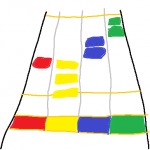A Quick Guide to Reduction Rules
- This topic is empty.
-
AuthorPosts
-
November 16, 2014 at 8:04 pm #391313
 Nightmare LyraMember
Nightmare LyraMemberJust starting out on trying to do reductions to your customs, or wanting to spice up your CAT reductions? Here are some quick guidelines
General
- Special markers, like lane rolls, glissandos, trill markers, etc. don’t work in reductions, and any part like this have to be reduced accordingly. Big Rock Endings work for all difficulties though
- Whatever you put into the reductions of course have to exist on Expert to begin with
Guitar/Bass
HARD:
- Try to keep it to a maximum of seven 8th notes in a row
- Cut down on the 16ths and never have 32th notes
- Quick jumps between Green and Orange should be wrapped to be easier to hit
- Sustain lengths should be the same as Expert (a 16th gap between the end of the sustain and the next note) unless there is a quick Green/Orange jump, if so make a 8th gap between the end of the sustain and the next note. If the tail is too short on Hard compared to Expert, making it unsustained all together is a option still
- Don’t reduce chords into single notes
- 3-note chords and Green/Orange chords are not allowed and need to be reduced/wrapped
MEDIUM:
- The chart should in general be 4ths (4 notes per measure at 4/4), with no note being a 8th or closer to each other
- Medium need to be wrapped into 4 buttons at a time, in most cases Green/Red/Yellow/Blue
- There should be a 3/16th sustain gap between the end of a sustain and the next note
- Don’t reduce chords into single notes
- Green/Blue and Red/Orange chords or harder are not allowed on Medium
- Sustain tails that are too short to be whammy-able should be made unsustained
EASY:
- The chart should in general be 2nds (two notes per measure at 4/4), with no note being a 4th or closer to each other
- Easy need to be wrapped into 3 buttons at a time, in most cases Green/Red/Yellow
- There should be a 4th gap between the end of a sustain and the next note
- DO reduce ALL chords into single notes for Easy only
- Sustain tails that are too short to be whammy-able should be made unsustained
5-Lane Keys
Keys is mostly similar to G/B reductions, with some exceptions:
- Sustain tails should be shortened to have a 8th gap on Expert/Hard and 4th gap on Medium/Easy before the next note if a chord is involved
- 5-lane Keys do not need to be wrapped into 3 or 4 buttons on Easy/Medium
- Chord difficulty is not as strict on 5-lane Keys, though the rules are still good to follow to a certain degree as to not make fake difficulty
- Sustains are often more awkward on Keys than G/B, so if you are bordering on whether or not to make a note sustain it’s generally best to leave it unsustained
- Broken chords (when a sustain overlaps another one) are often good to make into normal single notes or chords on Medium/Easy
Pro Keys
PK is reduced like 5-Lane is, with some extra rules:
- No 4-note chords on Hard and no 3-note chords on Medium (no chords at all on Easy of course)
- No lane markers are allowed on Medium/Easy, meaning those need to be wrapped differently than Expert/Hard to include all notes within a single range marker
- Big hand stretches (jumps, big chords) need to be avoided. Hard can not go longer than 11 semitones, Medium 9 semitones and Easy 7 semitones
Drums:
HARD:
- Make it a “reasonable version Expert”, reducing 16ths into 8ths, avoiding having more than two 8th kicks in a row, don’t put kicks under fills unless the kick is a important part of the fill’s feel, wrap any tricky sticking to be playable with normal “right-left-right-left” sticking, avoid completely hand crossovers, etc.
- Disco flips should be charted as a regular rock beat with 8ths on the hi-hat instead of 16ths, and with hats charted along any snare hits
MEDIUM:
- Make it a simplified bare bones version of Hard, reduce everything to a 4th grid, avoid kicks in between hand notes in most cases, etc.
- Do not turn two hand hits into one hand hits during a normal beat, if the right hand is constantly hitting the hi-hat on Hard it should do so on Medium as well, for example
- Never have 3 hits (both hands and a kick) play at once
EASY:
Easy is a odd case, where for each section you have to choose between two sets of charting styles:
- Only snares and kicks in the beat. Fills are still to be charted, as well as prominent crash cymbals, though no two limbs should ever hit anything at the same time
- Only hands, no kicks. Basically take the Medium chart and remove the kicks out of it and potentially simplify any complex fills a bit more
Mixing between these two styles in a song is often key to making a fun Easy chart, though if doing that be sure to do it rarely (for example, having verses as kick/snare but choruses as snare/kit)
—
Be aware that tempos above 160bpm and tempos below 80bpm can and probably should bend the reduction rules in a few ways. For example, you might want to have bigger gaps between the end of the sustain tail and the next note on faster tempos, have bursts of three 16ths on slower tempos on Guitar, etc.
Be also sure to read up on the Authoring Docs and ask questions if unsure about something: http://pksage.com/rbndocs/index.php?title=Main_Page
If anybody notices something I have missed or have worded wrong, let me know and I will fix it
November 16, 2014 at 9:29 pm #433016 CrazyCanuckParticipant
CrazyCanuckParticipantThanks for the tips!
November 18, 2014 at 6:48 pm #433106 pksageKeymaster
pksageKeymasterSome additions, clarifications, and changes:
- G/B/K: Chords can sometimes be reduced to single notes in special circumstances. If it’s a musically significant chord, though, it should stay a chord on H/M.
- G/B/K, Hard: Grace notes (16th or 32nd note upward slides) are almost always reduced to a single note or sustain on the higher note that starts where the lower note started on Expert. For instance, if you have BhO starting on 7.1.00 in Expert, it becomes just O on 7.1.00 in Hard.
- G/B/K, Hard: Don’t cut a full measure of eighth notes on the same gem(s) into x x x _ x x x _ unless it’s really fast; this compromises the rhythm. Try losing only the last note (x x x x x x x _).
- G/B, Hard: I would recommend more than a 1/8th space on a GO sustain. Treat the end of a sustain like a normal gem, and for GO on Hard, you want either a full 1/4 or maybe 3/8ths gap depending on the BPM.
- G/B/K, Medium/Easy: The docs actually recommend a full 1/4th gap after the end of a sustain on Medium and Easy. This gap is the same on Medium and Easy. (You only have two sets of sustain lengths: X/H sustains and M/E sustains). In general, sustains on lower difficulties should be saved for really long, significant held notes. When in doubt, err on the side of losing the sustain.
- G/B, Medium/Easy: While you can do a chart on mostly RYBO (or RYB / YBO for Easy), it’s not recommended. The “hack” of adding exactly one section with B/O gem(s) is the most player-friendly way.
- G/B, Medium/Easy: Be overzealous in adding space before and after a hand position switch (B/O section) on these difficulties. Depending on the BPM, you can go as high as a full measure on either side of the B/O section. I would never do less than half a measure.
- Pro Keys: Treat the maximum note ranges (11/9/7 semitones) exactly like GO jumps on Hard G/B or prepping for a B/O section on Easy/Medium G/B. The easier the difficulty, the more space you need between a big hand movement.
- Drums, Medium: Don’t reduce right-hand eighth note timekeeping to quarter notes unless the song is 140+ BPM. CAT will reduce to quarter notes by default, so be careful.
- Drums, Easy: Easy drums is literally “pick a section or two to be kick/snare, delete the cymbals from that section, and then delete kicks from the rest of the song”. Done. Most Easy drummers don’t like the kick pedal, so one or two sections is enough.
November 18, 2014 at 7:46 pm #433113 Nightmare LyraMemberG/B/K, Medium/Easy: The docs actually recommend a full 1/4th gap after the end of a sustain on Medium and Easy. This gap is the same on Medium and Easy.
Nightmare LyraMemberG/B/K, Medium/Easy: The docs actually recommend a full 1/4th gap after the end of a sustain on Medium and Easy. This gap is the same on Medium and Easy.That they do, however I always got flack for doing that for Medium on RBN and it seems to work quite well with a 3/16th gap, so it has sort of become a “thing” even if not technically “by the docs” still
November 18, 2014 at 7:47 pm #433114chexmixho
MemberThanks for this!
November 18, 2014 at 8:10 pm #433115 ArcanonMemberG/B/K, Medium/Easy: The docs actually recommend a full 1/4th gap after the end of a sustain on Medium and Easy. This gap is the same on Medium and Easy.
ArcanonMemberG/B/K, Medium/Easy: The docs actually recommend a full 1/4th gap after the end of a sustain on Medium and Easy. This gap is the same on Medium and Easy.That they do, however I always got flack for doing that for Medium on RBN and it seems to work quite well with a 3/16th gap, so it has sort of become a “thing” even if not technically “by the docs” still
Lemme toss in something more on this. Way I’ve always done it is (and the way I remember the docs saying for the longest time is) that a 3/16 gap is standard for G/B, and 1/4 is for 5-lane keys. This is how I’ve authored almost all of my RBN/C3 songs with extremely rare exceptions (like tempo considerations: I believe I left less space in the two Genesis 5-lane keys charts I did because the BPMs were so low).
August 19, 2018 at 6:29 pm #500355 imported_doaMember
imported_doaMemberI can’t believe that I’ve only just found this thread after all my time here!
This is so helpful – I wish it had been stickied so I could have found it sooner!
Can we sticky it?
November 24, 2018 at 4:03 am #502101 MADMac0498Member
MADMac0498MemberI have a couple of questions about this that have yet to be answered by even the documentation.
1. What exactly counts as a “quick” Green – Orange? No notes in between? Anytime within a quarter note? I’m sure it depends on tempo, but I’d assume an average tempo.
2. Unlike Pro Drums, which seem to be more an extension of the Expert drums, almost like an Expert+, the x2 Bass Pedal version of a song is an entirely separate chart. Would that be an Expert exclusive, or would the tips for kick reducing vary depending on which version it was? Basically, is x2 Bass Pedal also just Expert+, or would the lower difficulties assume a double kick as well?
Thanks for reading!
EDIT: So I thought that the documentation made a remark about how #1 was unclear. Apparently I was mistaken.
November 24, 2018 at 5:53 pm #502109 imported_doaMember
imported_doaMemberWhen I’ve had spare time (not often) I’ve been fleshing out the existing documentation on my local wordpress server (for fun).
Regarding #1 – see screenshot below based on documentation and advice from other authors on Discord.

I haven’t done a 2x chart yet so I’ll let someone else answer that.
November 24, 2018 at 5:59 pm #502110 MADMac0498Member
MADMac0498MemberThank you so much! This is incredibly helpful. You said something about a Discord. I may have to do some sleuthing to see what that’s about. Anyway, I can’t thank you enough for that; it always drove me crazy that there wasn’t any clarification on that.
EDIT: Never mind, I’m an idiot, you just said that they were on Discord in general.
November 24, 2018 at 7:38 pm #502117 imported_doaMember
imported_doaMemberYou’re welcome, glad that helped you out!
-
AuthorPosts
- You must be logged in to reply to this topic.